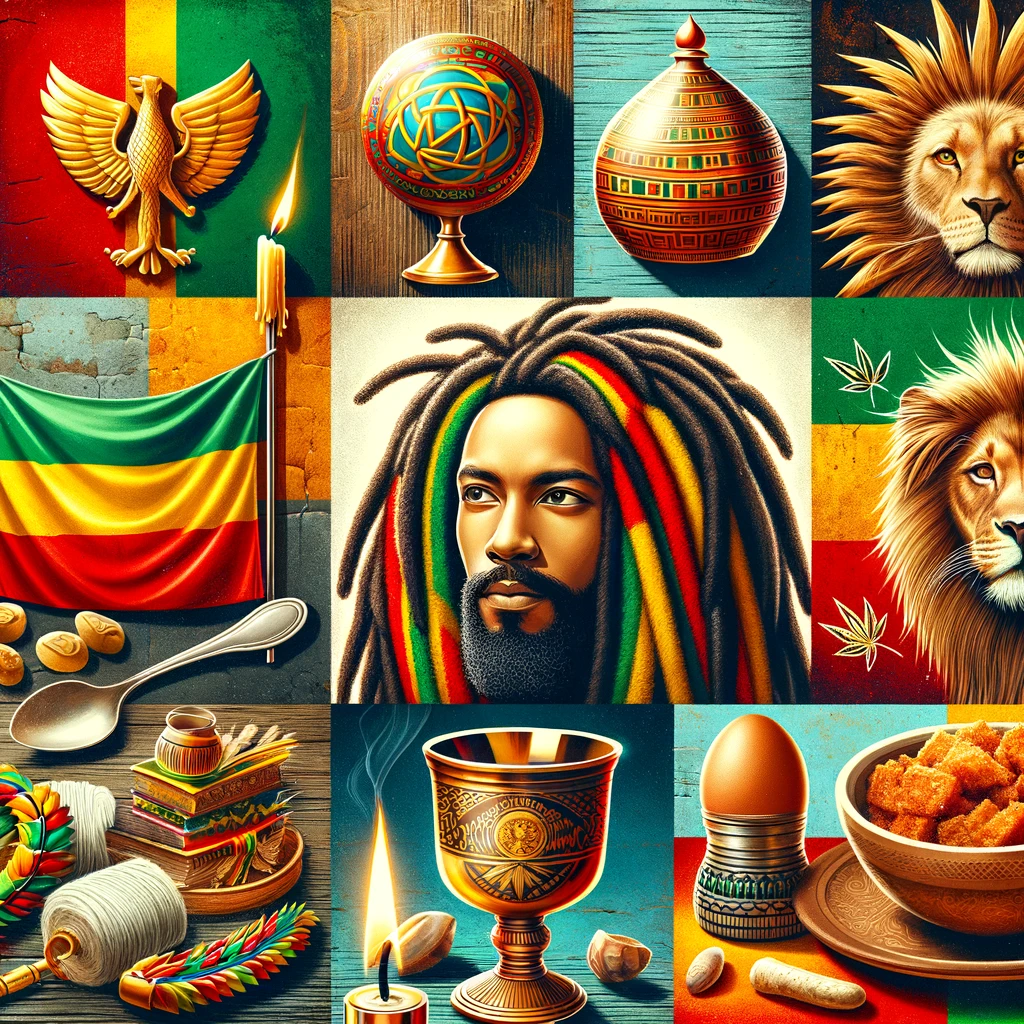Rastafari culture is rich with symbolic items that carry deep spiritual and cultural significance. These items are not just accessories but are integral to the Rastafari way of life, representing faith, identity, and spiritual practices.
1. The Chalice
The chalice, also known as the “wisdom weed pipe,” is a sacred tool used by Rastafarians for smoking ganja (cannabis) during spiritual ceremonies and reasoning sessions. Made from natural materials like coconut shells, bamboo, and clay, the chalice symbolizes purity and the natural connection to the Earth. Its use is considered a sacrament, helping to enhance meditation, spiritual insight, and communion with Jah.
2. Dreadlocks
Dreadlocks, or “locks,” are a powerful symbol of Rastafari identity and spirituality. They are inspired by the Nazarite vow mentioned in the Bible, representing a commitment to living a natural and righteous life. Dreadlocks symbolize strength, spiritual growth, and a rejection of Babylon (the corrupt Western society). They also serve as a visual reminder of the Rastafari connection to African heritage and resistance to oppression.
3. Headwear: Tams and Crowns
Rastafarians often wear head coverings like tams and crowns. Tams are knitted caps that come in various colors and patterns, often featuring the Rasta colors of red, gold, and green. Crowns are more elaborate headpieces that signify respect and honor, particularly worn by elders and those of high standing within the community. Headwear serves to protect and cover the dreadlocks, reflecting modesty and spiritual dignity.
4. The Ethiopian Flag
The Ethiopian flag, with its green, gold, and red stripes, is a prominent symbol in Rastafari culture. It represents the connection to Ethiopia, the Promised Land, and the hope for repatriation. Each color holds specific meaning: green symbolizes the land and its fertility, gold represents the wealth and prosperity of Africa, and red signifies the bloodshed in the struggle for freedom.
5. The Lion of Judah
The Lion of Judah is a revered symbol in Rastafari culture, representing the strength, courage, and lineage of Haile Selassie I. It is often depicted on flags, jewelry, and clothing. The Lion of Judah signifies the fulfillment of biblical prophecy and the divine kingship of Selassie, reinforcing the spiritual and royal heritage of Rastafari.
6. Ital Food
Ital food is a dietary practice in Rastafari culture that emphasizes natural, pure, and organic eating. Ital food excludes meat, dairy, and processed foods, focusing instead on fruits, vegetables, grains, and legumes. This diet is believed to maintain the purity of the body and mind, promoting health and spiritual well-being.
Closing Thoughts
These essential items and symbols are deeply embedded in Rastafari culture, reflecting the movement’s values, beliefs, and identity. They serve as daily reminders of the Rastafari commitment to living a life of faith, unity, and natural harmony.

